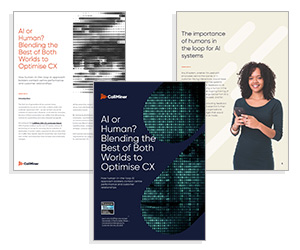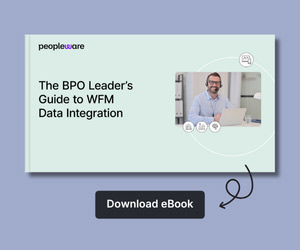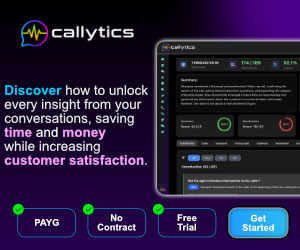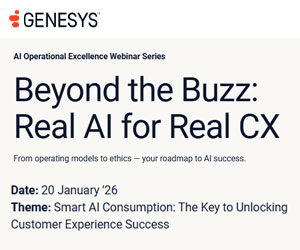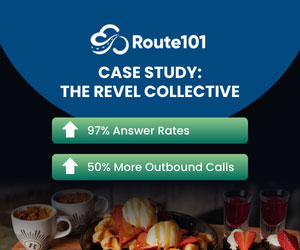CallMiner explores what customer insights are, the role of AI in uncovering them, key benefits and best practices for leveraging AI in customer insights.
Data alone doesn’t create understanding-insight does. Artificial intelligence (AI) converts raw information into clear, actionable customer insights, enabling businesses to recognize customer behaviours while foreseeing needs and resolving problems before they escalate.
From personalised experiences to proactive problem-solving, leveraging AI transforms how companies engage with their customers. This article examines the advantages of AI-driven insights and best practices for implementation.
What Are Customer Insights?
Customer insights represent the comprehensive understanding of customer actions, needs, and motivations based on the analysis of collected data.
It involves analysing data to discover patterns and trends that reveal how customers think and ac, and why. Customer insights enable businesses to forecast customer behaviour and improve marketing approaches while delivering superior customer experiences.
Data Collection vs. Actionable Insights
Data collection involves acquiring information from multiple channels, such as website analytics, social media interactions, and sales interactions. However, raw data alone isn’t enough. Actionable insights are the conclusions drawn from raw data.
The number of visitors to a product page represents data. Insight is gained through the analysis of the reasons customers decide to abandon their shopping carts. The distinction lies in the capacity to analyse data so that decisions can be made to enhance results.
Here are a few examples of valuable customer insights:
- Purchasing behaviour – Businesses improve their marketing strategies and inventory management by determining customer purchase patterns in terms of timing, location, and frequency.
- Product preferences – Product development and messaging strategies benefit from analysing customer preferences for specific product features.
- Engagement patterns – Analysing customer behaviour on digital platforms through metrics like click-through rates and time spent on pages reveals what content attracts attention and what fails to engage users.
The Role of AI in Uncovering Customer Insights
Artificial intelligence plays a critical role in uncovering customer insights for businesses. Traditional methods required manual tracking, surveys, and fragmented data analysis.
AI revolutionises the process through automation and delivers real-time, deeper analytical insights. AI solutions enable businesses to analyse large volumes of structured and unstructured data to extract patterns and predict behaviours, as well as understand customer sentiment and emotion, without manual human intervention.
Let’s take a look at the technologies used to drive customer insights.
Machine Learning
Machine learning algorithms analyse customer data to identify patterns and trends across large data sets.
Machine learning analyses customer interactions from multiple touchpoints, such as call centre conversations, online chats, and email exchanges to recognize recurring problems and emerging indicators of dissatisfaction while understanding customer needs.
Using this approach enables businesses to effectively manage customer issues before they become significant problems.
Predictive Analytics
Predictive analytics analyses historical data to generate forecasts about future customer behaviour. Companies can predict customer needs while refining product offerings and marketing approaches by observing changes in buying patterns and customer engagement.
Predictive models function to identify customers who might be at risk so companies can implement customized customer retention strategies.
Natural Language Processing
Capturing authentic customer sentiment requires businesses to analyse unstructured data such as social media posts and product reviews.
Natural language processing (NLP) analyses this data to measure emotional responses while identifying new patterns and pinpointing hidden concerns that conventional surveys fail to uncover.
When negative sentiment suddenly increases on social platforms, it serves as an early warning system for brands to identify potential service problems that need attention.
Real-World Examples of AI-Driven Customer Insights
Companies around the world leverage AI-driven customer insights to improve processes and deliver better customer experiences. Here’s a look at a few examples.
Spotify
Spotify leverages machine learning to evaluate user listening behaviour. These insights are used to generate personalized playlists and recommendations, which increases user engagement and satisfaction.
Delta Air Lines
Delta Air Lines uses artificial intelligence and natural language processing to evaluate feedback obtained from customer surveys, along with commentary from social media and service call transcripts.
The airline utilizes this system to swiftly resolve service disruptions while strengthening customer communication and boosting passenger experience.
Amazon
Amazon uses predictive analytics for predicting customer purchase patterns, which helps optimize inventory control and improve logistics operations.
Amazon’s proactive strategy results in faster and more efficient fulfilment of customer demand compared to its competitors.
Key Benefits of AI-Driven Customer Insights
Customer expectations are continuously evolving in today’s dynamic environment. AI-driven customer insights empower businesses to understand their customers at a granular level, enabling smarter decisions and more meaningful interactions.
From personalized experiences to proactive issue resolution, AI transforms raw data into actionable intelligence that elevates customer engagement and drives growth. Here’s how AI is reshaping the way companies understand and serve their customers.
Improved Personalization
Modern customer experience relies heavily on personalization. The application of AI-driven insights enables businesses to evaluate real-time interactions across various channels, which allows them to instantly identify user patterns and preferences.
Brands can now provide personalized messages, product suggestions, and service adjustments right at the moment when customers need them.
AI technology moves beyond reacting to customer actions by using predictive capabilities to create personalized experiences that connect with each individual.
Enhanced Customer Segmentation
The foundation of successful marketing lies in gaining knowledge about your target customers. Traditional segmentation depends on unchanging data points, whereas AI-driven analytics explore beyond surface-level information.
AI enables more detailed customer segmentation by processing real-time behaviour data together with demographic information and sentiment analysis.
Through this advanced method, companies develop highly personalized marketing initiatives that speak directly to the unique requirements of each customer group, which improves engagement and conversion rates.
Informed Decision-Making
Data-driven decisions outperform those based only on instinct. Decision-makers gain actionable insights through AI analysis of live customer interaction data.
Data showing real customer behaviour supports all strategic decisions, from marketing changes to service improvements to product launches.
Businesses can have more confidence in decisions that align with both customer expectations and business objectives.
Proactive Issue Resolution
Waiting for problems to surface is a reactive strategy. AI-driven customer insights enable businesses to detect issues early before they become serious problems.
Real-time detection of potential pain points through conversation intelligence, combined with sentiment detection and predictive modelling, enables swift responses from customer-facing teams.
Proactively addressing small issues before they grow into major complaints maintains customer satisfaction while strengthening brand loyalty.
Best Practices For Leveraging AI in Customer Insights
To fully leverage the power of AI-driven customer insights, companies must take a strategic approach that goes beyond simple implementation.
Companies get the most out of AI-driven customer insights when they define precise goals and maintain strong data management while fostering collaboration among departments and prioritizing continuous improvement.
Define Clear Business Goals
The value of AI-driven insights depends entirely on the business goals they support. Before deploying AI tools, organizations must identify key business objectives and the metrics that matter most.
Whether it’s boosting customer retention, increasing conversion rates, or enhancing service efficiency, clearly defined goals provide a roadmap for effective data analysis. The emphasis on purpose guarantees AI projects support broader organizational business strategies.
Invest in Quality Data
AI requires clean, structured, and comprehensive datasets. The presence of fragmented or messy datasets generates unreliable insights that can compromise strategic decision-making.
Data reliability depends on implementing strict data collection and management systems. When organizations put resources into data cleaning and validation, they ensure their AI models receive the most relevant and accurate information.
Collaborate Across Departments
Insights need to be distributed across marketing, sales, and support teams to reach their maximum potential. Marketing teams achieve better customer segment visibility, while sales teams gain lead behaviour understanding and support teams start predicting service requirements.
Through cross-functional alignment, departments gain access to real-time insights that enrich the customer experience.
Continuously Improve Models
Customer behaviour constantly changes, and therefore, the predictive models we use must also evolve. Maintaining accuracy and usefulness of insights requires AI models to be updated on a regular basis to reflect new behaviours, market shifts, and emerging trends.
The dedication to ongoing improvement keeps decision-making processes sharp and relevant while building resilience to market changes.
This blog post has been re-published by kind permission of CallMiner – View the Original Article
For more information about CallMiner - visit the CallMiner Website
Call Centre Helper is not responsible for the content of these guest blog posts. The opinions expressed in this article are those of the author, and do not necessarily reflect those of Call Centre Helper.
Author: CallMiner
Reviewed by: Rachael Trickey
Published On: 24th Jul 2025
Read more about - Guest Blogs, CallMiner






 CallMiner is the leading cloud-based customer interaction analytics solution for extracting business intelligence and improving agent performance across all contact channels.
CallMiner is the leading cloud-based customer interaction analytics solution for extracting business intelligence and improving agent performance across all contact channels. 




